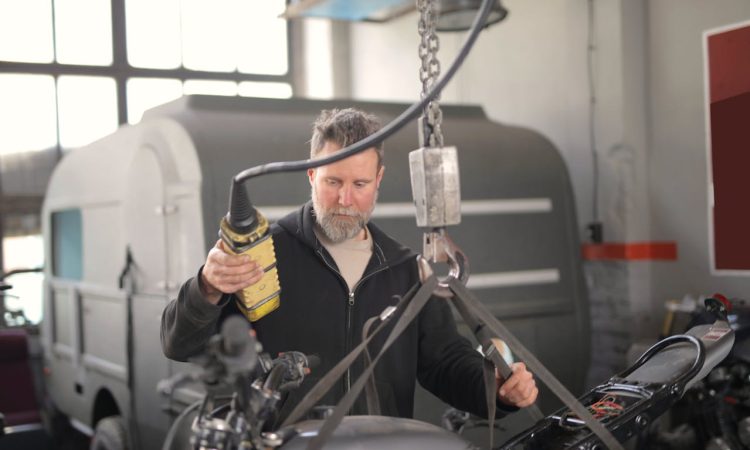
When it comes to understanding the mechanics of an airplane, one crucial component that often goes unnoticed is the hydraulic fluid. Without this vital substance, the airplane would not be able to function properly. But what exactly is hydraulic fluid, and why is it essential for aviation? In this article, we will explore everything you need to know about an airplane’s hydraulic fluid.
What is Hydraulic Fluid and its Role in An Airplane?
Hydraulic fluid is a specially formulated fluid used in hydraulic systems to transmit power and force. In the context of airplanes, hydraulic fluid plays a critical role in enabling the operation of various essential systems, including brakes, landing gear, and flight control surfaces. The hydraulic system in an airplane consists of a series of interconnected components, such as pumps, reservoirs, valves, and actuators. When pressure is applied to the hydraulic fluid, it is used to actuate these components, allowing for precise control and movement of various aircraft systems. Without using a high-quality product like 5606 Hydraulic Fluid, the operation of these crucial systems would be compromised, leading to potential safety risks and reduced performance.
Types of Hydraulic Fluids
There are several types of hydraulic fluids used in airplanes, each designed to meet specific performance requirements and environmental conditions. The most commonly used hydraulic fluids in aviation include:
- Mineral-based hydraulic fluids: These fluids are petroleum-based and have been used in aviation for many years. They offer good lubrication properties and can handle a wide range of temperatures. However, they are not as resistant to fire and have lower oxidation resistance compared to other types of hydraulic fluids.
- Skydrol: Skydrol is a brand of hydraulic fluid known for its fire-resistant properties. It is often used in commercial and military aircraft due to its high flash point and self-extinguishing characteristics. Skydrol is also resistant to oxidation and provides excellent lubrication for hydraulic components.
- Phosphate Ester: Phosphate ester hydraulic fluids are known for their exceptional fire resistance and high-temperature stability. They are commonly used in certain military aircraft and offer excellent protection against corrosion. However, phosphate ester fluids can be more expensive and have specific compatibility requirements with aircraft materials.
- Hydrocarbon Synthetic: Hydrocarbon synthetic hydraulic fluids are synthetic-based fluids designed to provide enhanced performance and longer service life. They offer excellent fire resistance, oxidation stability, and low-temperature flow properties. Hydrocarbon synthetic fluids are often used in modern commercial aircraft.
Importance of Proper Hydraulic Fluid Maintenance
Maintaining proper hydraulic fluid levels and ensuring its overall condition is crucial for the safe and efficient operation of an airplane. Regular maintenance and inspections of the hydraulic system, including the fluid, are essential to identify and address potential issues before they escalate. One of the critical aspects of hydraulic fluid maintenance is monitoring the fluid’s contamination level. Contaminants such as dirt, water, and air can degrade the fluid’s performance and lead to system failures. Regular fluid sampling and analysis can help detect contaminants and take appropriate corrective actions.
In addition to contamination, the hydraulic fluid’s temperature and viscosity should be closely monitored. Extreme temperatures can affect the fluid’s properties and compromise system performance. Regular fluid temperature checks and viscosity measurements can help ensure the fluid is operating within the recommended range.
Signs of Hydraulic Fluid Problems
Detecting and troubleshooting hydraulic fluid problems promptly is crucial to prevent potential system failures. Certain signs can indicate issues with the hydraulic fluid, and appropriate actions should be taken to address them.
One common sign of hydraulic fluid problems is a decrease in system performance. If the aircraft’s hydraulic systems are not operating as expected, such as slower response times or reduced power, it may indicate issues with the hydraulic fluid. In such cases, a thorough inspection of the fluid’s condition, including contamination levels and viscosity, should be conducted.
Another sign to watch out for is unusual noises or vibrations during hydraulic system operation. Unusual sounds or vibrations can indicate the presence of air bubbles, cavitation, or component failures. These issues should be investigated promptly to prevent further damage and ensure proper system operation.
The Impact of Hydraulic Fluid on Airplane Performance
The quality and condition of hydraulic fluid have a significant impact on an airplane’s performance and safety. Understanding this impact is crucial for aviation professionals and operators to ensure the highest level of safety and efficiency in flight operations. Proper hydraulic fluid properties, such as viscosity and lubrication characteristics, are essential for maintaining the smooth and efficient operation of hydraulic systems. The correct fluid properties ensure that components move as intended, reducing friction and wear, and contributing to overall system efficiency.
Hydraulic fluid also plays a vital role in the safe operation of critical systems, such as brakes and landing gear. The reliable and efficient functioning of these systems is crucial for safe takeoffs, landings, and overall flight operations. Contaminated or degraded hydraulic fluid can compromise the performance and reliability of these systems, leading to potential safety risks.
In addition to system operation, the choice of hydraulic fluid can also impact an airplane’s fuel efficiency. Using hydraulic fluids with optimal viscosity and flow properties can help reduce energy losses and improve overall fuel consumption. This, in turn, contributes to more economical and environmentally friendly flight operations.
Conclusion
Proper fluid selection, maintenance, and replacement contribute to improved performance, reduced risks, and more economical flight operations. As aviation technology continues to evolve, so do the requirements and standards for hydraulic fluid in aircraft. Staying informed about the latest developments in hydraulic fluid technology and adhering to best practices is crucial for maintaining the highest level of safety and efficiency in aviation.


